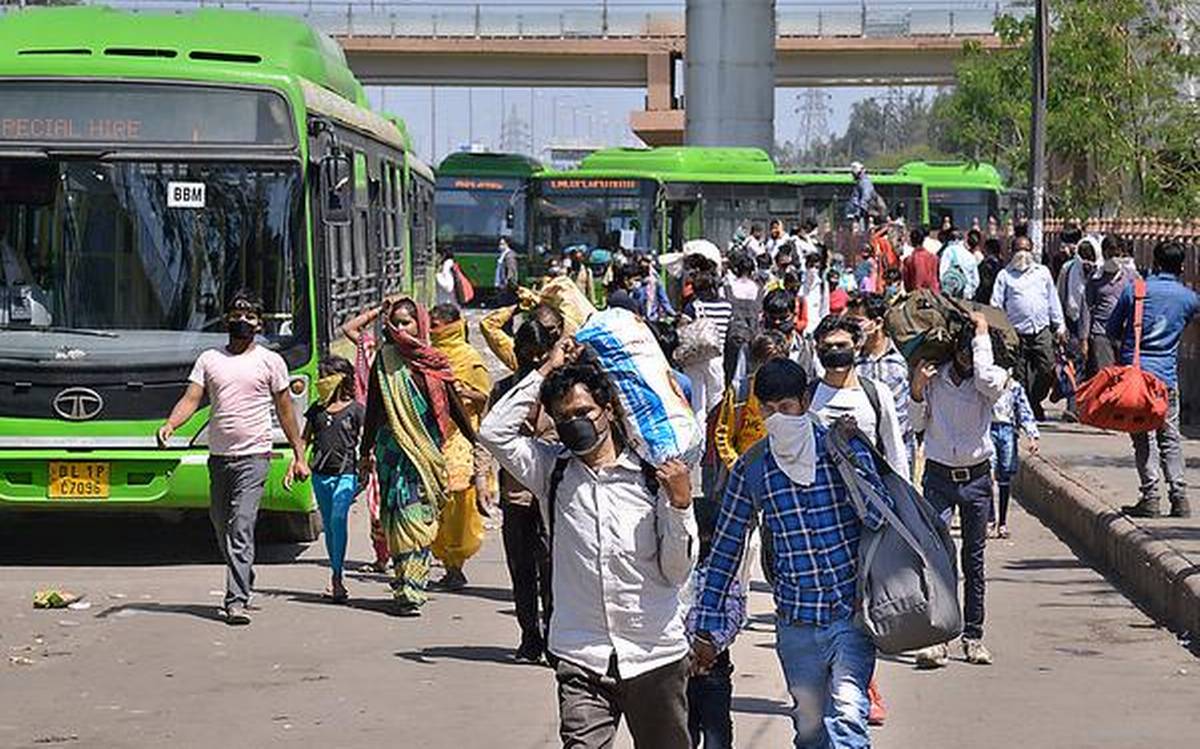Bengaluru: One of the biggest collective shocks India faced as the coronavirus pandemic ramped up was the sheer number of migrant workers walking out of Delhi at the start of the lockdown. They risked everything they had to return home, alerting the nation to the sheer scale of migrant labour in India’s busy metros. It took a lockdown to reveal these large numbers.
India must ask the question, why do so many people migrate from Uttar Pradesh, Bihar and other states to Delhi or Mumbai where they mostly get jobs as contract labour with meagre compensation? A look at the economic growth of five populous states with low per-capita income against states with the highest reveals stark differences in growth models—the Great Indian Divergence.
India’s per-capita GDP has grown steadily from Rs 90,000 in FY’14 to Rs 1.49 lakh in FY’20 at 8.8% YoY. While this is a tremendous achievement, a closer look at individual state per-capita incomes shows it varies extensively (Table 1). States with the highest per-capita GDPs are growing faster and have smaller populations. Some states with the lowest per-capita GDPs have significant populations while growing slower than the India-average. They need to accelerate economic growth to provide employment and good wages to their large populations.

Source: RBI, Union and State Budget documents, Census, CRS
Some of the poorest states by per-capita GDP are the states with the largest populations—Bihar, Uttar Pradesh, Madhya Pradesh, Rajasthan, and West Bengal. These five states have a combined population of 62.5 crore—almost half of India’s population at 137 crores. These states have a population-weighted average per-capita GDP of Rs 87,000 in FY’20, growing at 8.5% YoY from Rs 53,000 in FY’14. Madhya Pradesh and West Bengal are doing better than the other states, in general. Still, growth is nowhere close to where it needs to get to provide adequately for their larger, more impoverished populations. The combined population in these five states is growing at 2% YoY, higher than the India-average at 1.6%; much higher than the combined population of the highest-performing states at 1.2%. High population growth and low economic growth may spell disaster for these states as the southern and western states zoom ahead.
Meanwhile, the highest performing states in per-capita GDP are Telangana, Karnataka, Gujarat, Maharashtra and Tamil Nadu. With a combined population of 37.9 crore—just over 1/4th of India’s population—and high per-capita incomes, these states are growing faster and leaving behind their northern and eastern counterparts. They are growing, on average, at 10.6% YoY—higher than the India average of 8.8% YoY. Inequity will keep increasing as these states grow faster with their slower-growing populations. India cannot afford to let this Great Divergence in state economic growth continue if we are to grow to our $5Tn and $10Tn goals to become a Top 3 economy.
The Top 5 states have a higher share of services and industry sectors in their economies and are more urbanized. This translates to faster economic growth, better standards for higher education and opportunities for quality mass employment. The lower-performing states are less urbanized, have a higher share of agriculture, with weaker growth, fragmentation, lower college enrolment and fewer opportunities for personal wage growth.
Another significant consequence of the Great Divergence is very high internal migration through the country. It is estimated that ten crore people, at the very least, migrate from states with low growth toward states with higher growth and employment opportunities. Unfortunately, the work they find as contract labour in these states doesn’t result in higher purchasing power compared to their home states as living costs are exponentially higher. We saw this situation play out very recently when the Covid-induced lockdown threw migrants around the country in a lurch, especially in Delhi and Mumbai. Without job security, savings and staying power, many migrants had to resort to painful ways of returning to their home states.
The only way we solve this Great Divergence is if every state government, particularly those of highly populous ones, focus on economic growth and labour-intensive employment opportunities. Some strategies state governments can consider are:
- Infrastructure development to provide construction jobs at scale
- Higher education to build skilled workforces for high value-add sectors
- Labour-intensive manufacturing to provide mass employment and boost export capabilities
- Systematic shift of workforce from agriculture to construction and manufacturing at 2% YoY.
These strategies are discussed in detail in India’s Grand Reconstruction Budget (The Sunday Guardian, April 18, 2020), post-Covid.
Research shows that in today’s times, states have larger spend budgets, and more substantial impact on the economic entity they govern than ever before.
A study of central and state expenditures (Table 2) reveals the central government’s share of expenditure has steadily decreased from 30% of total spending in FY’16 to 24.5% in FY’19. State aggregate spending is 75.5% of the total. GoI’s ability to promote economic expansion and job creation by deploying the necessary capital resources is limited.

Source: RBI, Union Budget documents
India is not a monolith, and every state needs a unique approach based on its economic composition. With larger budgets, state governments have the resources to provide quality employment and growth opportunities to its citizens. Every citizen must ask their state government to utilise their growing resources to urbanize and build infrastructure, industrial clusters, skills development programs, and higher education capacity with a development-focused agenda. Migrating to other states in search of employment cannot be the end state; being able to live and prosper in one’s own home state must be the objective.
Eliminating the Great Divergence is how India becomes a Top-3 economy faster.
T.V. Mohandas Pai is Chairman, Aarin Capital Partners and Nisha Holla is Technology Fellow, C-CAMP.

